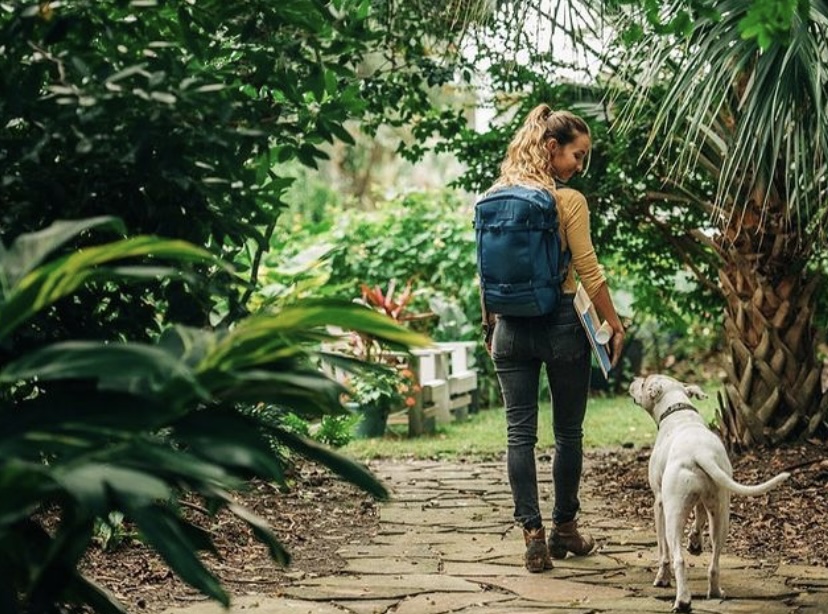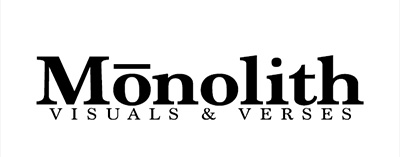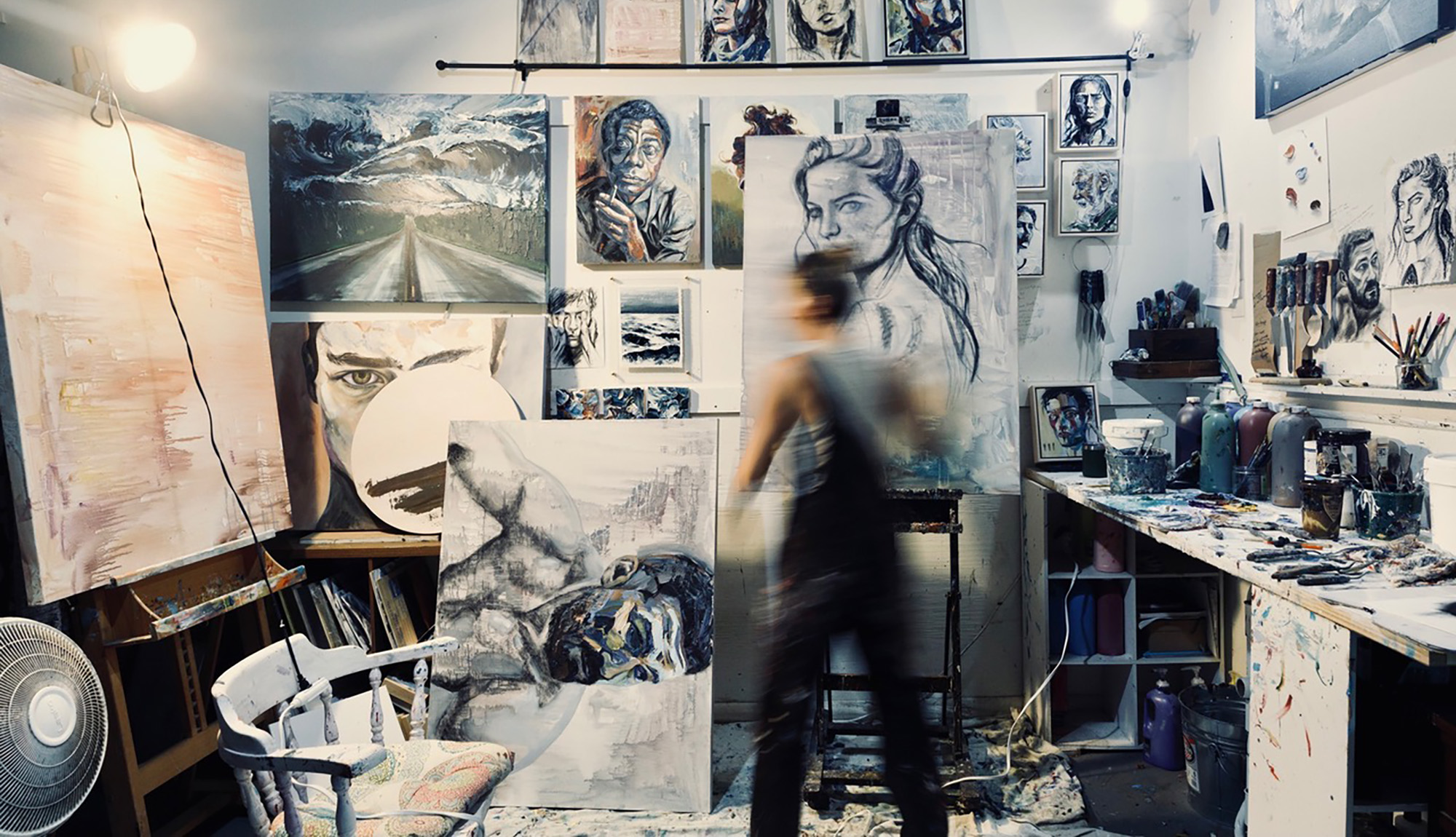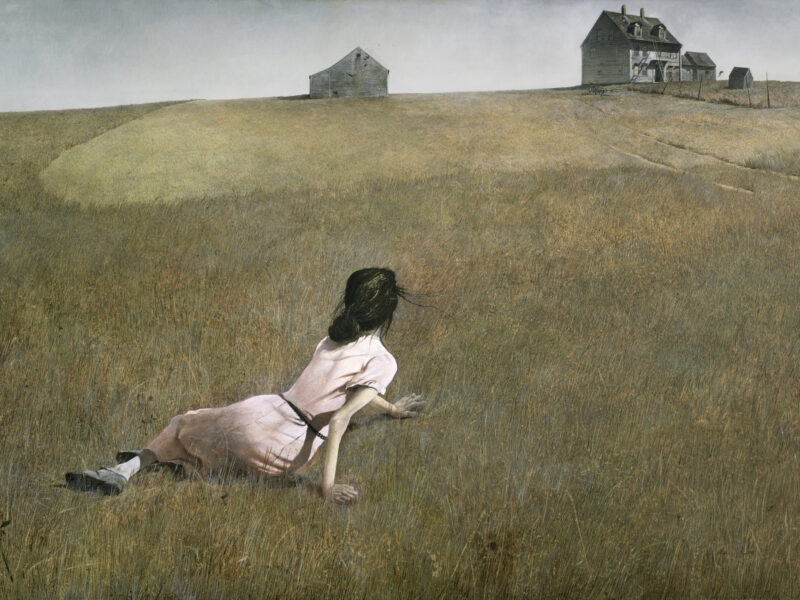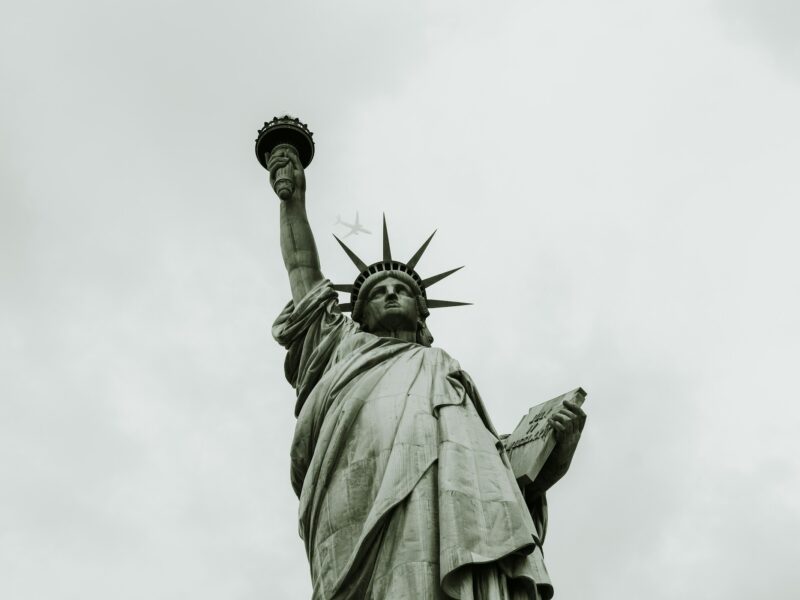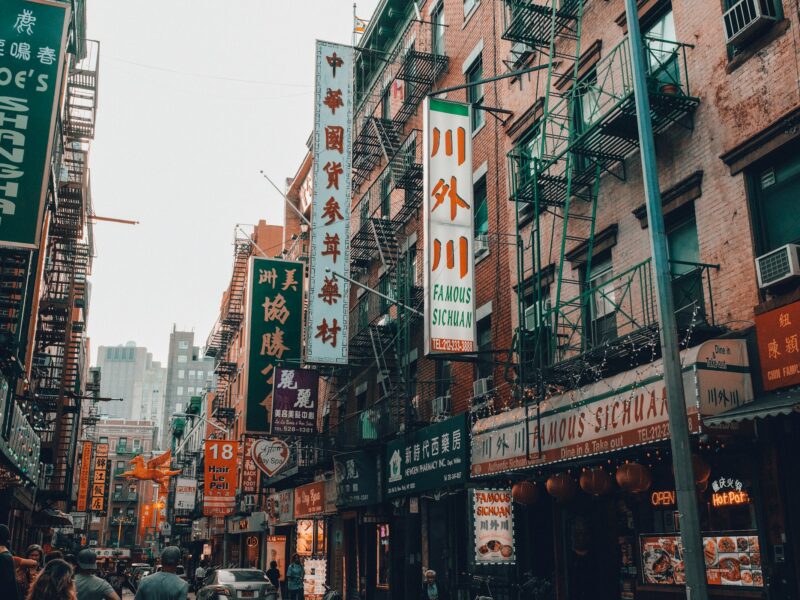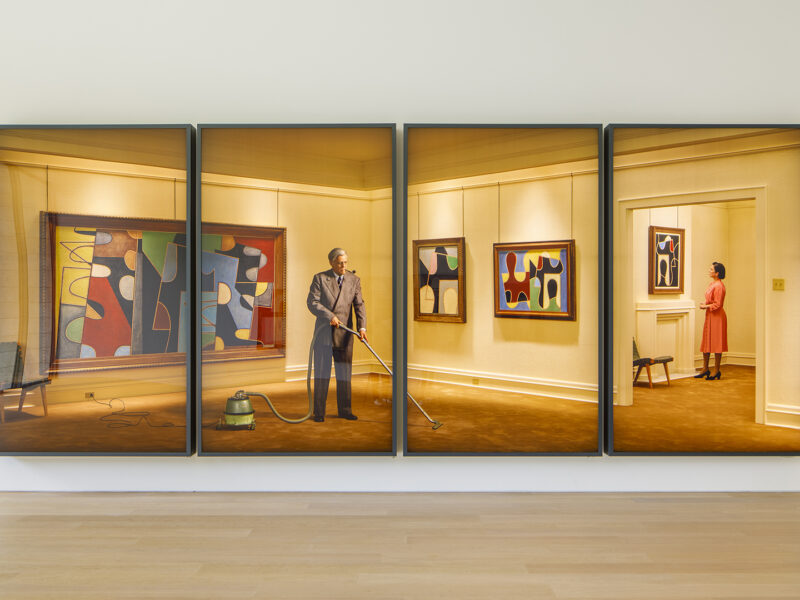Raised on the Connecticut coastline, Briahna Wenke began painting murals for local businesses by age 16. Nowadays she’s based in Charleston, South Carolina, creating expressive and evocative work through bold and sculptural paint application. While her paintings have been gaining increasing popularity in the art scene, last Saturday I had the chance to interview Bri to discuss her oeuvres and talk about it conceptually and technically, as well as getting an overview of the artistic influences behind her work.
Hey Briahna, how do you think it will be the return to normal life after Covid-19? I mean, we will all forget in a hurry about this nightmare, or we will not trust our neighbour and his potential contagiousness for a long time?
I think this definitely depends on where you live, as different regions seemed to be hit much harder than others, and regional political climates oddly dictated responses to the pandemic as well. Overall, it is clear that the pandemic ripped open a lot of hidden wounds, in so many directions. There were moments of utter selfishness and tunnel vision, but there were also moments of human compassion and hope. People generally come together in crisis, in the most remarkable ways. The rawness and vulnerabilities that the pandemic exposed were not without pain, but I feel there is a blatant honesty we were meant to revisit, as a species.
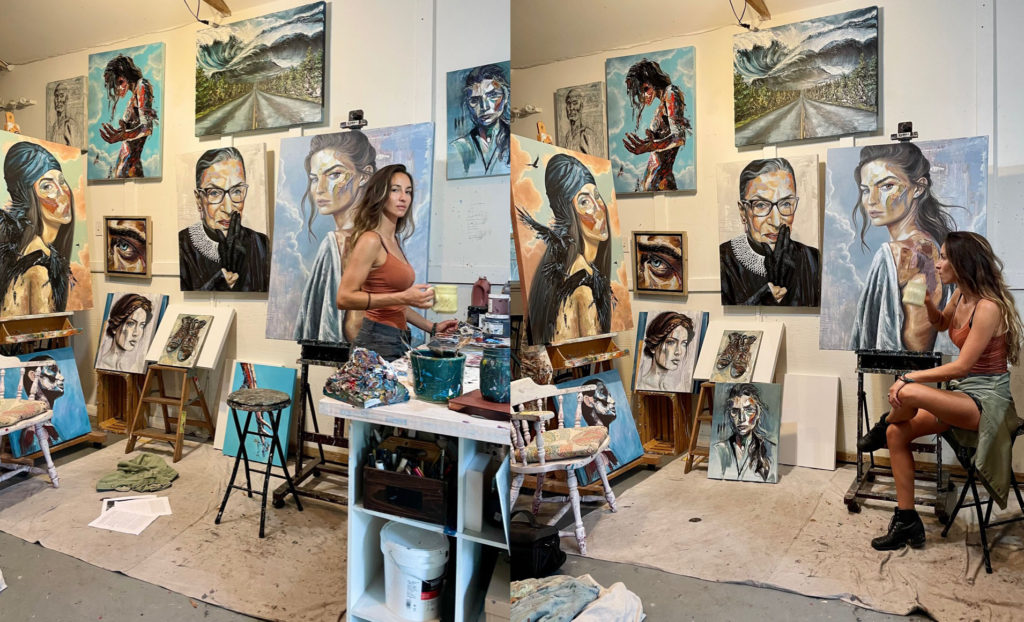
Has the current situation inspired you some new work, or did you prefer not to be “infected” by the pandemic theme?
I’ve always been fascinated by the parallels and antiquity of the human story, the patterns we seem to ride and how the themes of our stories tend to cross-pollinate. The pandemic certainly heightened this for me, it was clear that we were all in a very similar boat (speaking for first world scenarios), we all were feeling a desperate need for connection. We all were forced to take a very hard look inward. Our facades were no longer valuable, honesty finally felt like a method of survival and not something we could continue to push to the backburner.
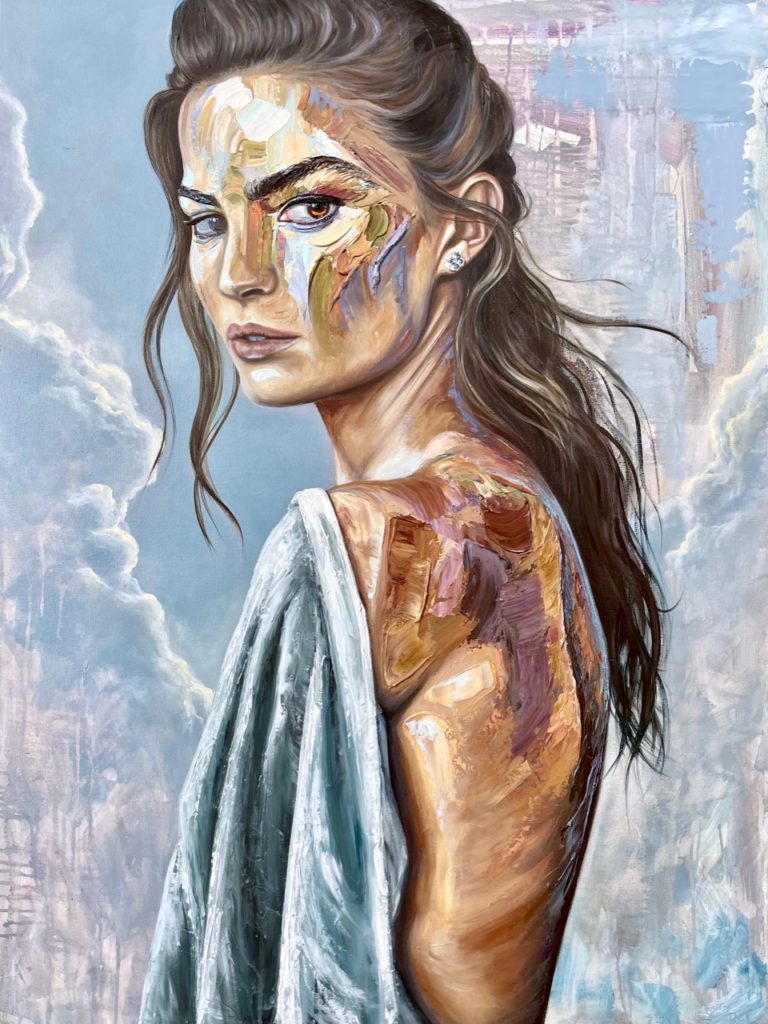
There are many surprising aspects in your art, but your sublime technique is immediately evident for sure. The thing that struck me the most is the ease of execution, everything seems perfectly balanced and clean executed, as if you had worked so hard on your technique that now you can afford the luxury of forgetting it. Which do you think are the distinctive features of your technique?
Every artist has to experiment and fail and experiement some more. Over the years I feel I have developed my own vocabulary that I can pull from and use as I work through each piece. Particularly the heavy, raw palette knife strokes. It’s crude, it’s blatant, it marks a moment in time that I’ll never get back. I’m fascinated by contrast, and I’m exploring the harshness of the thick, impasto paint alongside the softer realism of brushwork, particularly on skin. You cannot have any one thing without its contrasted counterpart, that’s how anything is defined, is it not?
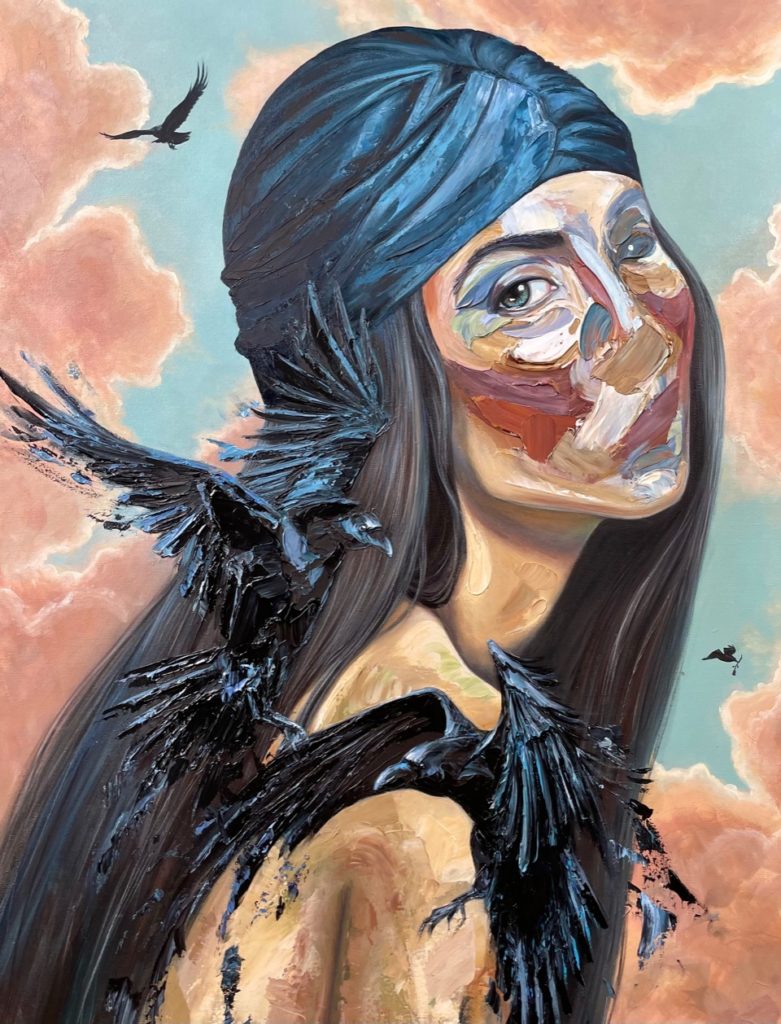
Your impressive portfolio reveals an “hard working” attitude, maybe routine and being strict with yourself is very important everyday. How’s a full day in your life? Tell me some about your daily routine.
We all wish each day could be perfect, of course this cannot ever be the case. But damn it, we can try! An ideal day would consist of a 15 minute meditation and breath work right away after I wake up, to begin to reel back the monkey mind and prime it for some clarity. After coffee, a run would be next, or a Grit Box workout, because tiring the body has always contributed to quieting the mind. There also this sense of capability that rewards you post-workout, and this is crucial in acquiring the confidence to sit in front of the easel each day. I have journals and notecards next to my bed, in my studio, in my backpack, in my car, etc to always be able to write down notes and ideas as I read them, hear them in lyrics, think them, etc. The human brain can be unreliable at times, you have to write this stuff down as it comes. Sometimes I like to do small quick palette knife sketches to loosen up and activate that part of my brain, sometimes I dive right into the larger works in progress. I’ve tried to muscle a strict routine around my days, but I’ve learned that each one will be just a little different, and that is okay. That works for me.
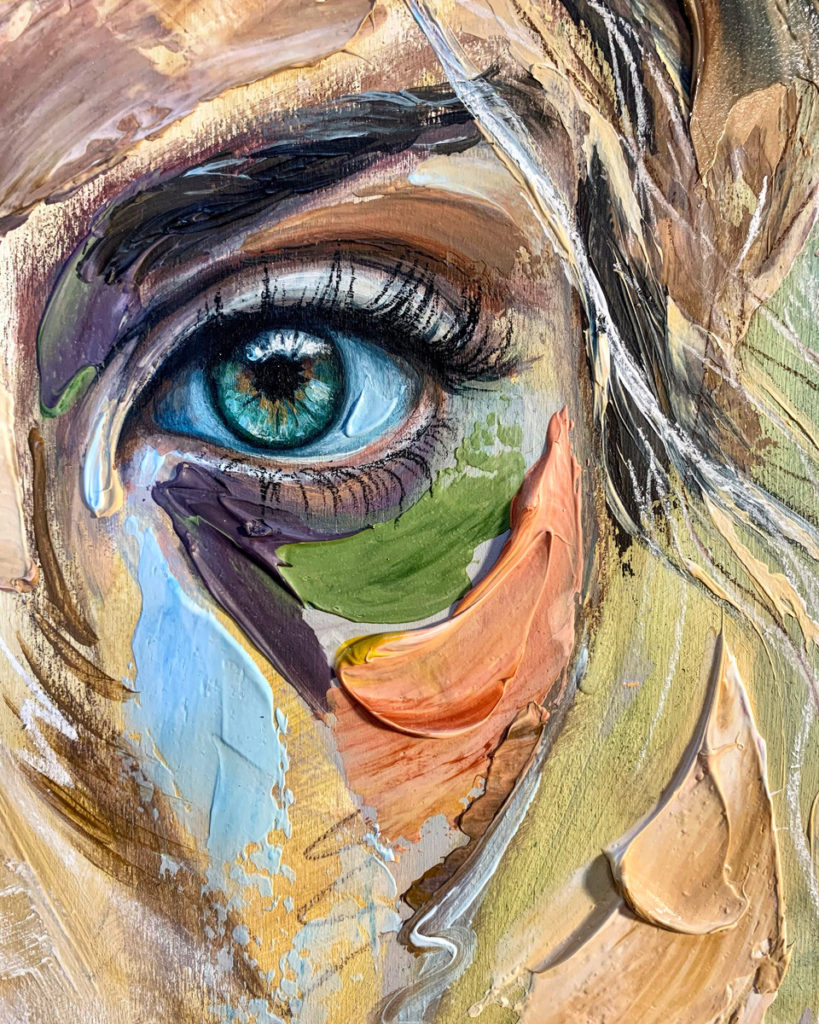
Which of your paintings has been most important to developing your personal style? I mean, can you highlight a turning point in your artistic production?
Sometimes the shifts are very subtle. But a recent piece that I think marks a new direction for me is ‘the escorts’. I’ve always admired the work of artists such as Andrea Kowch and Mitch Griffiths, who have wildly different styles, but they produce a narrative within their work through symbolism, multiple elements, etc. I believe ‘the escorts’, with the Ravens and subtle gestures, is my transition into telling more of a story within my paintings. It’s still about the portrait, and where I choose the focal point to be on the face, but there’s a bit more to the story now. I want the viewer’s eyes to wander and create their own connections.
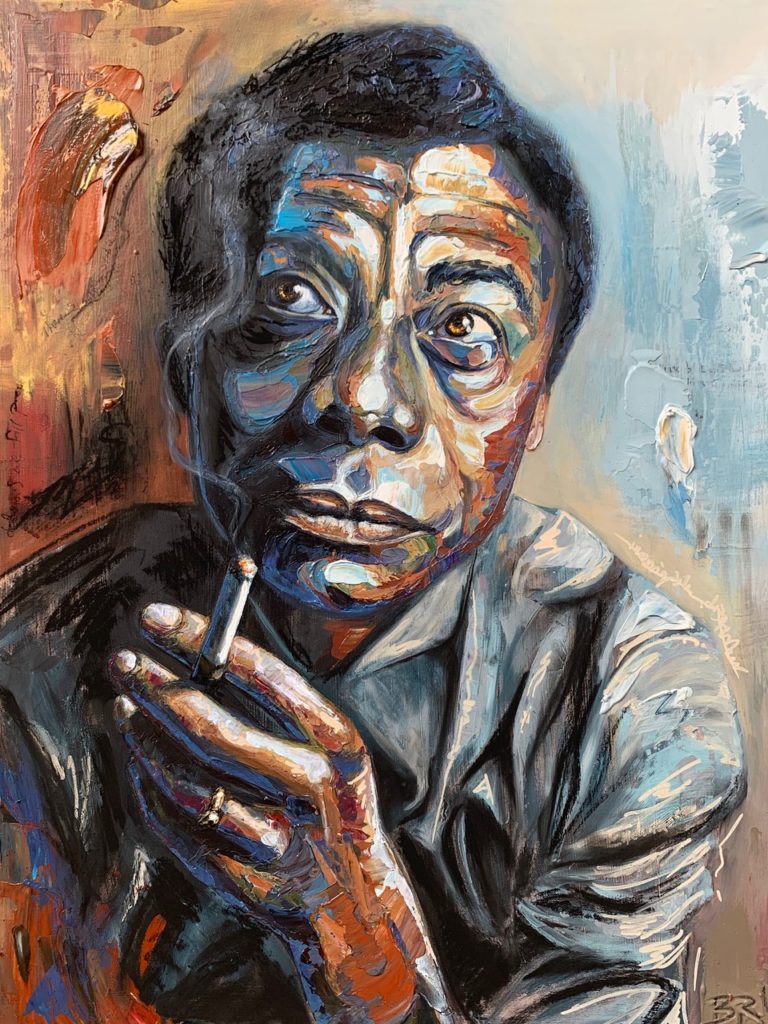
Tell me some about what excites you in the world of art today, give me three names in contemporary art that blow your mind.
Andrea Kowch is fascinating. Her work has this subtle lonely nod to Andrew Wyeth, in palette too, and she paints a raw, crude narrative within each piece.
Lynn Boggess is a landscape artist that I’ve admired ever since I saw the work here in person in a Charleston gallery. The deliberate, coarse, yet unbelievably accurate palette knife application baffles me to no end. The photography of
Lee Jeffries never disappoints. He captures the most interesting subjects with such heightened contrast and integrity.
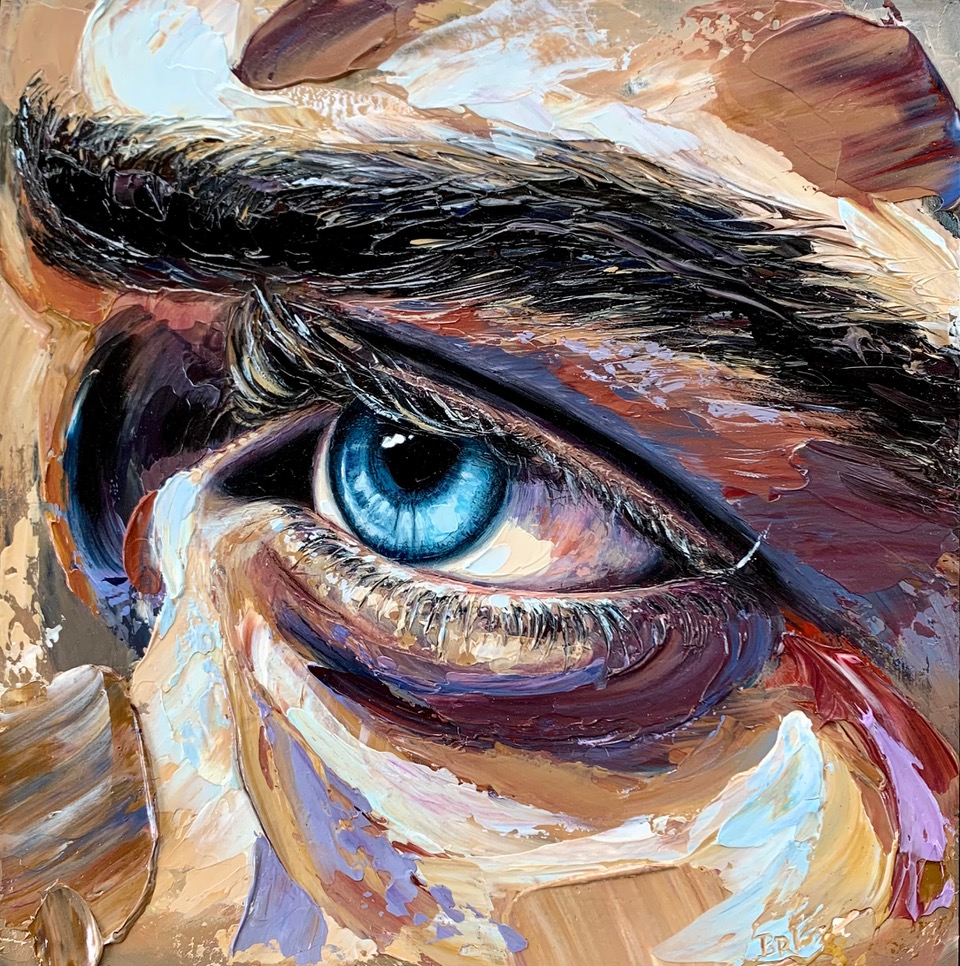
Most of the artists claim to be original, but looking at the infinite artistic production achieved so far is very hard not to find something mentioned earlier. I know it’s hard to admit, but if you had to choose one artist or an artistic movement, of who would you say, “Well, I took something from him/her, I’m in debit with him/her”?
It is true, we absorb our surroundings and experiences without ever realizing it, our entire lives. It’s quite impossible to create anything within a void. It always comes from somewhere, mixes with your unique set of stories, timing, and perspective, and is pushed back out through your own unique filter. This is how I view creativity. When I first learned about expressionism, in which poets and painters opted for a distortion of reality in attempt to convey emotion, this gave me a sense of permission to be more vulnerable in my work. I also remember standing in front of Monet’s massive work at L’Orangerie in Paris, baffled at the mess up close, but how the whole visual came together when you allow your eyes to soften. Trusting your first impression, as the impressionists did, I aim for this level of confidence in the studio.
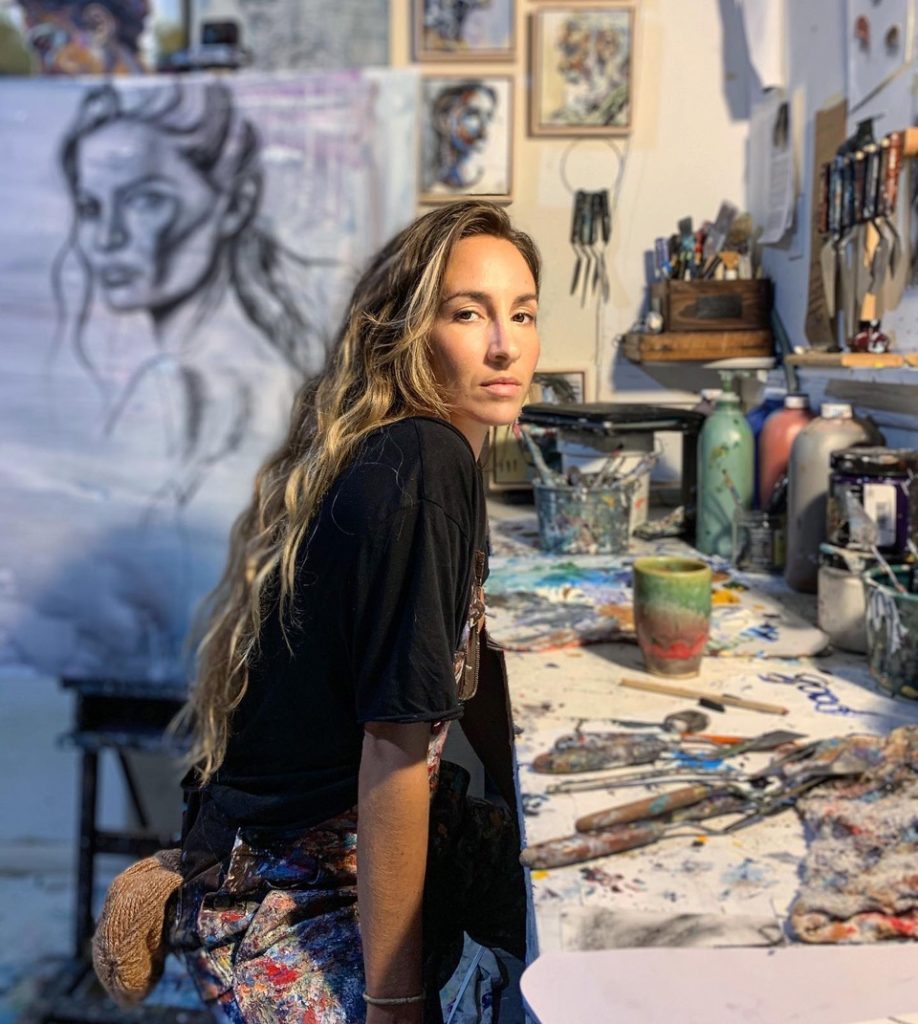
Speaking of promotion, yesterday I saw a very cool documentary about a painter that I honestly don’t love: Salvador Dalì. It was in the 60’s and he declared: “TV is a means of mass cretinization, but it makes me sell more paintings, so it’s ok”. Do you think it’s applicable to Social Media today? Are you frightened by the obvious trivialization of content or do you find it simply inevitable?
This is a tough one, because social media is precisely what the user makes of it. It can be completely toxic and impair mental health, or it can be a remarkable tool to connect and reach people like never before in the history of humanity. For an artist, it can be disappointing to realize that such a tiny percent of people will ever view your massive paintings in person with the naked eye, but instead, thousands will see your painting on a 3×3” screen. And never before has an artist had so much control and power over their own audience and platform. I think to stand out in the sea of content, one has to remain authentic, and limit the amount of daily consumption.
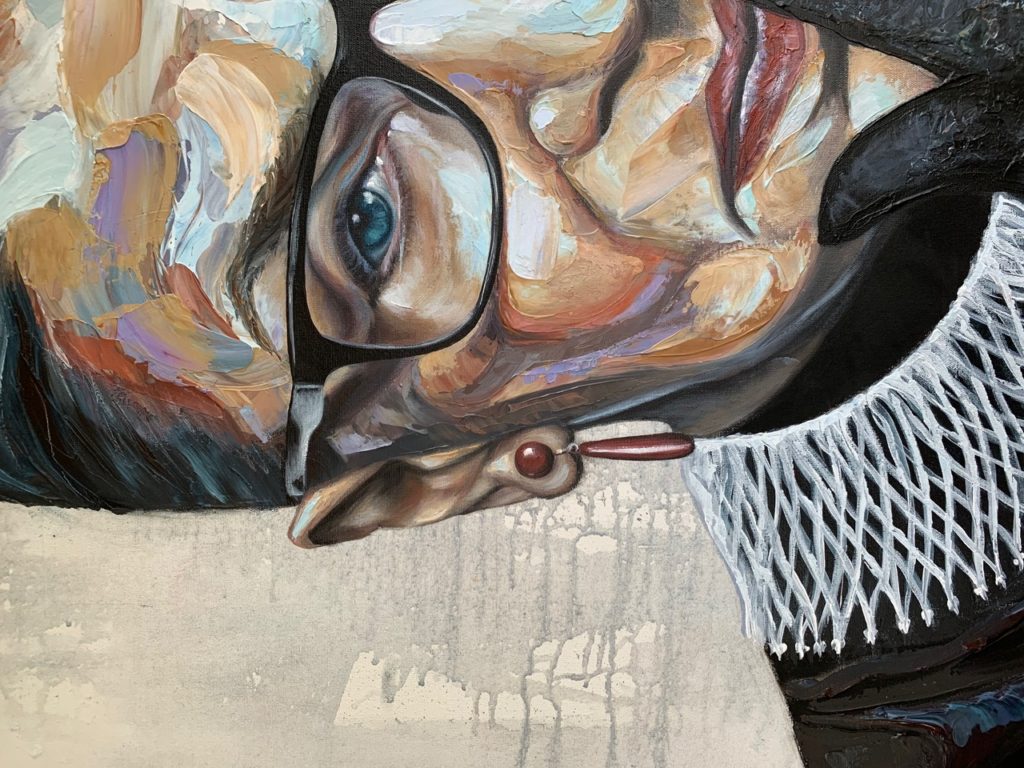
Let’s play with time for a minute: you’ve booked a dinner table for 4, and you can invite whomever you want from Ramses II to Billie Eilish. Tell me your DDT, Dinner Dream Team.
Well, I’d go with….James Baldwin, Sally Hemings, Charles Bukowski… and Ghengis Khan.
Now here we go, Proust Questionnaire. Your favorite virtue?
Honesty
Your main fault?
Self-degradation
Your idea of happiness?
Quietly running a trail deep in the woods with my dog Tucker
If not yourself, who would you be?
A touring musician
How you wish to die?
Out in the natural world doing something I love
What is your present state of mind?
A little scattered emotionally, but trying to stay focused on tasks at hand.
Our time is running out, let’s leave ourselves with your vision for the future. Please tell me the projects you would like to achieve,
and something you would finally get rid of.
I’m currently working on a large body of work that will exhibit this fall in Charleston, it will be a collection of both live installations and paintings, and it will be my most ambitious endeavor yet. Then I’d like to exhibit overseas very soon, in England, France, or Italy. I’d like to purchase a home in the Blue Ridge Mountains, where I will sip coffee in the morning, red wine in the evening, run endless trails, and paint in my studio every day. I’d get rid of self-doubt, think of how much I would get done if that was no longer part of me…
All images by Briahna Wenke website | Instagram








